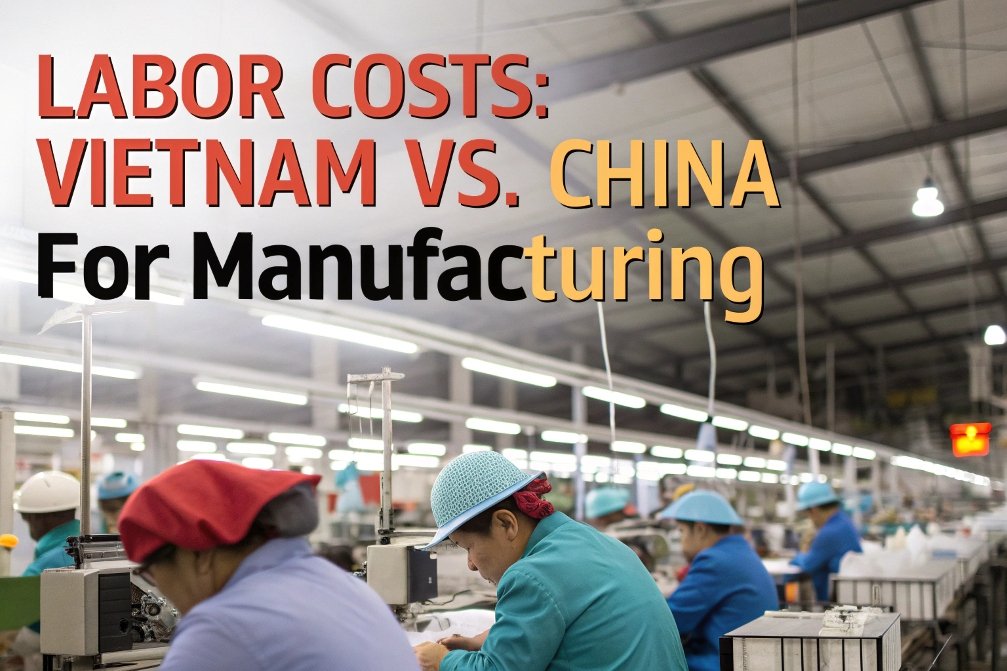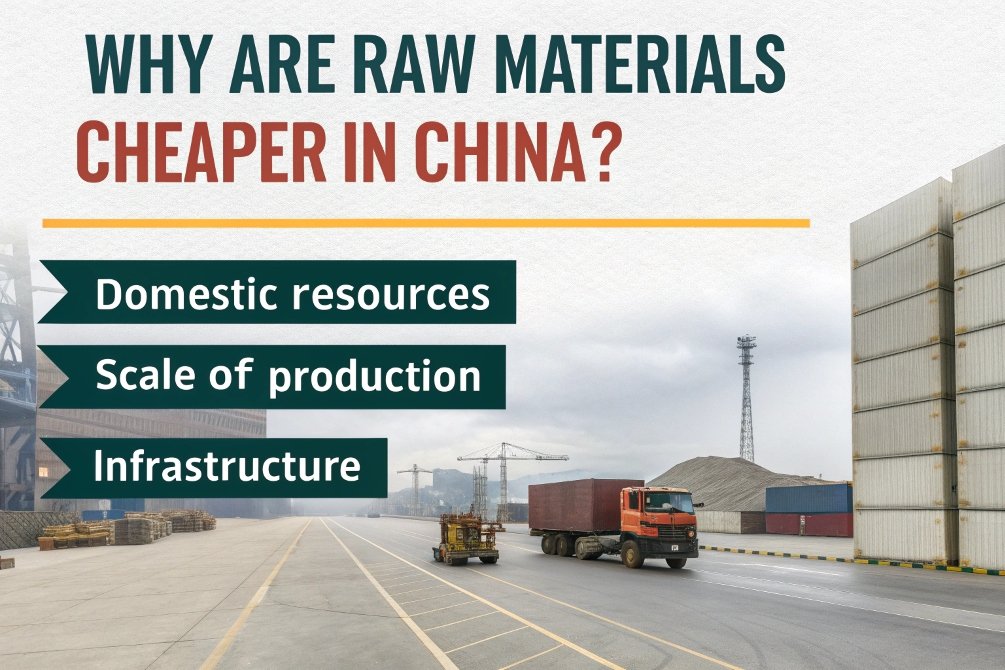
When considering shifting production between Vietnam and China, understanding the differences in labor, raw materials, and management costs is crucial for making an informed decision. Having worked with many businesses in both countries, I’ve observed that while Vietnam offers certain advantages, China still holds significant benefits in some areas. Each of these cost factors has its own nuances, and they vary based on industry, location, and business scale.
Labor, raw materials, and management costs are key considerations when comparing Vietnam and China. While Vietnam offers cheaper labor and favorable costs for some raw materials, China still holds an edge in raw material availability and management costs.
Let’s dive into how each of these costs compares between the two countries and what that means for businesses deciding where to manufacture.
Is labor cheaper in China or Vietnam?
Labor costs are one of the most significant factors when evaluating production costs in different countries. In recent years, China’s labor costs1 have been rising steadily, particularly in the coastal and urban areas. Meanwhile, Vietnam has maintained relatively lower wages, making it an attractive option for labor-intensive industries.
Labor is generally cheaper in Vietnam than in China, especially for low-skilled and semi-skilled workers. However, China’s efficiency, automation, and skilled labor2 still provide significant advantages for high-tech industries.

Labor Cost Comparison
| Country | Average Hourly Wage (USD) | Industry Focus |
|---|---|---|
| China | $3 – $6 | Electronics, Automotive, Machinery |
| Vietnam | $1 – $3 | Textiles, Furniture, Electronics |
Factors Affecting Labor Costs
- Skill Levels – China has a larger pool of skilled labor, which can justify higher wages in more complex manufacturing sectors. In contrast, Vietnam offers lower wages in low-skill industries, but the gap narrows as industries evolve.
- Region – Labor costs vary significantly within both countries. Coastal cities in China have higher wages, while rural areas in both countries offer lower costs.
Conclusion on Labor Costs
For industries that rely heavily on manual labor, such as textiles or furniture, Vietnam offers a clear advantage due to its lower labor costs. However, for high-tech manufacturing or industries requiring specialized skills, China still provides a more efficient workforce despite higher wages.
Why are raw materials cheaper in China?
China is a global leader in the extraction, production, and processing of raw materials3. It boasts a vast domestic supply of minerals, metals, and other essential materials needed for manufacturing. In addition, China’s highly developed infrastructure and the scale of its manufacturing sector allow it to achieve economies of scale that lower material costs for domestic producers.
Raw materials tend to be cheaper in China due to its extensive domestic supply, economies of scale, and highly efficient manufacturing processes. However, in certain sectors, Vietnam is catching up as its industrial base continues to expand.

Factors Contributing to Lower Raw Material Costs in China
| Factor | Impact on Raw Material Costs |
|---|---|
| Domestic Resources4 | China has vast natural resources, including metals like steel, aluminum, and rare earths. |
| Scale of Production5 | The scale of China’s manufacturing sector allows for bulk purchasing and processing, driving down costs. |
| Infrastructure6 | China’s advanced logistics network reduces transportation and storage costs, further lowering material costs. |
Raw Material Cost Comparison
| Material | Price in China (per ton) | Price in Vietnam (per ton) |
|---|---|---|
| Steel | $500 – $600 | $550 – $650 |
| Aluminum | $1,700 – $2,100 | $1,800 – $2,200 |
| Copper | $6,000 – $6,500 | $6,200 – $6,800 |
Conclusion on Raw Material Costs
China’s raw material prices remain competitive largely due to its massive production and domestic supply chains. For businesses that depend on bulk materials, China’s established infrastructure and resource availability can make a big difference. However, Vietnam is slowly improving its supply chains, particularly for industries like textiles and footwear, which rely less on heavy raw materials.
Is Vietnam more expensive than China?
When comparing the overall cost of production between Vietnam and China, it’s clear that Vietnam is generally cheaper for labor-intensive industries. However, the costs of materials, management, and logistics can vary significantly. While Vietnam offers lower labor costs, raw materials and logistics costs are often higher due to a less developed domestic supply chain and infrastructure.
Vietnam is typically cheaper than China for labor-intensive industries but may be more expensive in areas like raw materials, logistics, and certain high-tech manufacturing processes.

Cost Comparison Breakdown
| Cost Factor | China | Vietnam |
|---|---|---|
| Labor | $3 – $6 per hour | $1 – $3 per hour |
| Raw Materials | Generally lower | Higher in some sectors |
| Logistics | Lower due to advanced infrastructure | Higher due to developing infrastructure |
| Management | More experienced workforce, but higher costs | Lower costs but less experienced workforce |
Conclusion on Cost Differences
While Vietnam’s lower labor costs make it a cost-effective alternative to China for many industries, companies should not overlook the higher costs associated with raw materials, logistics, and management. For labor-intensive sectors like textiles or furniture, Vietnam is an excellent choice. However, for industries reliant on raw materials or advanced manufacturing processes, China may still be the more cost-effective option.
Conclusion
When evaluating whether to move production from China to Vietnam, businesses must consider the full cost structure—labor, raw materials, logistics, and management. Vietnam offers clear advantages in labor costs, but China’s superior infrastructure and raw material availability make it a more cost-effective choice for certain industries. A careful, sector-specific analysis is necessary to make the best decision for long-term success.
Understanding labor costs is crucial for businesses looking to optimize production expenses in different countries. ↩
Analyzing the skilled labor market can help businesses make informed decisions about where to locate their manufacturing operations. ↩
Exploring the reasons behind lower raw material costs in China can provide insights into global supply chains and manufacturing strategies. ↩
Understanding China’s domestic resources can provide insights into how they influence raw material pricing and availability. ↩
Exploring the scale of production reveals how China’s manufacturing efficiency contributes to lower costs, crucial for businesses. ↩
Investigating China’s infrastructure can highlight its importance in logistics and cost reduction, essential for supply chain management. ↩

